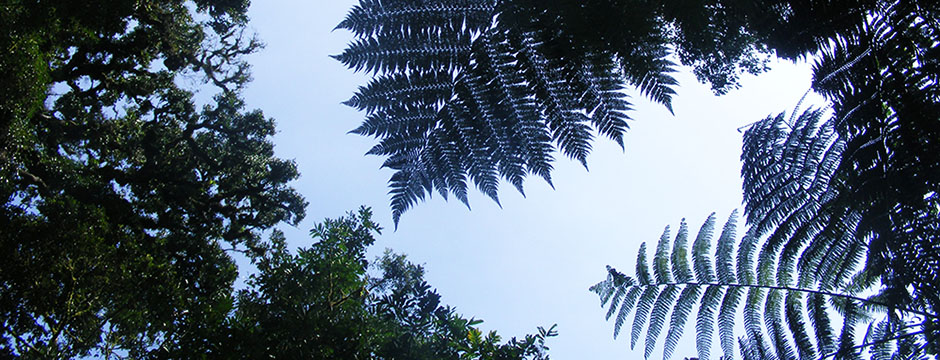
Have you experienced the real jungle? Bwindi hiking is the real deal
Been walking in the woods? Try walking in the jungle! Hiking Bwindi Impenetrable Forest from North (Buhoma) to South (Nkuringo) – with (I hoped) the slight possibility of glimpsing a Mountain Gorilla en route – is a hike I’ve wanted to do for ages. Are you planning to to gorilla trekking in Uganda? Stay an extra day and do this hike too.
Walking through Bwindi is the real deal.
It’s a world of dense greenery, layer after layer of vegetation, common plants in uncommon sizes, babbling brooks and smooth round boulders to hop across patches of bog; a wonderful series of waterfalls – so much more to see in the forest than I’d even imagined (especially if you have a knowledgeable guide or two). Gorilla trekking is a not-to-be-missed experience, but Bwindi has brilliant hiking adventures too.
I’m now trying to work out which hiking Bwindi trail can the Muzungu do next?…
Every good hike starts with a good breakfast and Buhoma Lodge rise to the challenge: platters of fresh fruit, thin pancakes with honey, cereals, traditional cooked English breakfast, toast and fresh coffee – I enjoy every single one of those guilty carbs in preparation for our day-long walk.
The only problem with Buhoma Lodge in Bwindi Impenetrable Forest, Uganda is that it is the first place we visit, and nowhere else quite compares to it for the rest of our trip. Leaving Buhoma Lodge feels like leaving home – in fact my return trip is planned before I leave the building. I love the fact that all the staff come out to say goodbye to us, even the masseuse and the chef!
Everywhere we walk, we are accompanied by smiling faces. This Uganda Wildlife Authority ranger has such a lovely smile. He doesn’t say much but he keeps a good eye on us all day.
At the entrance to the park, our guide Blasio points to the Nyaga river and the nearby hills of the Congo.
Bwindi is home to seven types of primate. Its most famous primate inhabitants are the mountain gorilla, whose population roam between Uganda, the Congo and Rwanda. Bwindi – and specifically Buhoma, where we start our trek – has the world’s highest concentration of mountain gorillas and is the main centre for gorilla trekking. Bwindi is also home to chimpanzees and Red tailed monkeys [my namesake nkima] are a particular favourite of mine as regular Diary readers may remember from my first trip to Bwindi.
Bwindi is also home to a small (and rarely seen) population of Forest elephants, who are smaller than their more well-known Savannah African elephant relatives.

The Muzungu crosses one of Bwindi Impenetrable Forest’s rivers, on a previous hike, following the Ivy River trail from Nkuringo
Moss-covered bridges constructed of twigs and branches lead us across brooks and streams and into the heart of Bwindi Impenetrable Forest.
The wide fronds of giant fern trees are like huge hands waving us their welcome. Their fronds unfurl like a beckoning finger, to invite us deeper into the interior.

I love ferns – aren’t they elegant? #Edirisatreks with Gorilla Highlands in Bwindi Impenetrable Forest
The scenery is breathtaking, the air is pure, and the only sounds are natural ones: water, birdsong, the leaves dropping from the branches overhead. As I’m taking it all in, mesmerised, a kaleidoscope of small yellow butterflies dance through the air ahead of me. “Didn’t Disney do a great job?” Quips John, the voice from Gorilla Highlands videos.
Bwindi Impenetrable Forest is home to hundreds and thousands of exotic and rare plant species. Many are endemic. I particularly like the larger-than-life plants. Here ferns grow to three and four metres tall. We crane our necks to stare up at 100-year-old Mahogany tree and take pictures of the pink Impatience flower (a favourite with the gorillas apparently). The flowers gain their name from their quick life-cycle: they open in the morning and drop to the forest floor after just one day.
Looking down at my feet, I notice I am following in the footprints of a duiker.

Duiker (small antelope) footprint, Bwindi Impenetrable Forest with Gorilla Highlands. Diary of a Muzungu
Our guide points to a vibrant Mother of Pearl butterfly. On forest hikes in Uganda, indescribably beautiful butterflies appear from nowhere. Keep your eyes peeled, they flit in and out of your life in seconds. Perhaps that’s their appeal?
Mother of Pearl butterfly. Image courtesy of www.learnaboutbutterflies.comWhen 17 people are excitedly tramping through the forest, birdlife and wildlife hides… unsurprisingly! I was happy to focus on the giant plants and the microscopic fungus. Nature is amazing – even if it doesn’t ROAR at you.

Tiny fungus thrive on the underside of a log on our #gorillahike with Gorilla Highlands in Bwindi Impenetrable Forest
Taking a decent photo in a the Impenetrable Forest is not easy with a very average camera like mine, so you will forgive the rather dark fuzzy pictures – but you get a sense of the place: wall to wall prolific greenery, rivers and waterfalls, in fact a series of three waterfalls that we explore on an hour’s walk from Buhoma.

Diary of a Muzungu leaves the laptop at home for the week-end… Waterfalls beckon. Bwindi Impenetrable Forest, Uganda
The water is cool and clear. I could have (should have) had a dip at the river junction – Miha did!
Bwindi hiking – above the waterfalls!
Take time to visit all three of Bwindi’s waterfalls. Each one is different.
Check out my minimalist (short!) videos of the waterfalls in Bwindi Impenetrable Forest.
The cold clean water and surrounding environment make you feel so alive.
I’m amazed at how few tour operators insist on having this on a safari itinerary. The walk to the waterfalls is the perfect antidote to being stuck in a vehicle for hours or days. The Gorilla Highlands initiative is all about spending more quality time in the region – gorilla trekking in Uganda? Yes, a brilliant experience, but there’s so much more to see and do in south western Uganda.
I loved every minute of our eight hour walk through the Forest, crossing rivers, stopping at waterfalls, taking photos of plants and fungus along the way.
Along the way there are warnings of Safari ants. “Don’t tuck your trousers into your socks. We want to see you JUMP!” Jokes Miha.

These unassuming and faint marks on the ground are actually industrious Safari ants. Their organisational skills are mind-blowing. They march in one direction delivering chopped up leaves, and back in the other direction empty-handed, for a refill. Round and round they go. Not a single one of them deviates from the direction set by the others.
By mid-afternoon, our group has been walking for several hours. We walk at different speeds and are spaced out at intervals through the Forest, escorted by numerous guides and UWA rangers. There is a shout from someone up ahead:“Red ants!” – and I watch the person ahead of me suddenly start running uphill for 100 metres, trying not to stop long enough for the tenacious red ants to cling on to their boots.
And then it’s my go. Somehow I find the energy to run uphill. At the top – beyond the red ants at least – there is a frenzy of excited laughter and furious stamping of feet as we jump up and down to get rid of the red ants. If ever an animal was tenacious, it is the red ant! Their bite is unforgiving but the incident is quickly forgotten.

View of Bwindi Impenetrable Forest as we ascend from the River Ivy up to Nkuringo. You can clearly see where the protected area of the forest is bordered by community land
Bwindi hiking tips
- Have a small day bag (rucksack) and make sure it’s waterproof. Pack water (minimum one litre), lunch, waterproof clothing and camera.
- Forget about your phone. Turn the damn thing off.
- Take a walking pole or stick. It will help steady you when climbing over rocks and slippery slopes.
- Ideally you should wear walking boots that cover and support your ankle as you climb over rocks and tree roots. Trainers may be okay – if you don’t mind getting your feet wet! There are occasional boggy patches and the ground everywhere can be wet and muddy.

Sun peaks through the canopy of Bwindi Impenetrable Forest – but climbing on the uneven terrain of slippery tree roots can be difficult if you don’t have the right footwear
- Keep your mouth shut when you look up through the trees – we spotted quite a few spider’s webs as we looked up!
- Take your camera but be aware that photography is difficult as the forest is quite dark.
- I love birdwatching but forest birds can be hard to see. On my first trip to Bwindi, I hired an expert bird guide. This made all the difference. He was able to mimic the birdsong and call them out of the forest! Forest birds (like those of Kibale Forest) have my favourite songs. You may not see a lot of birds, but you will certainly hear them. Did you know Bwindi was voted the number one destination in Travel Africa magazine’s list of top 10 birdwatching sites in Africa?
- Wear gaiters to keep the ants and other insects out of your boots / trousers / knickers! Failing that, tuck long trousers into long socks.
- You don’t have to do the full hike to enjoy Bwindi’s waterfalls. Allow 2 to 3 hours to take in the series of three main waterfalls. A shorter one hour walk takes you to the first waterfall (only). You can then circle back to your starting point in Buhoma.
- Support the Conservation Through Public Health charity’s work to protect the gorillas by staying at their very affordable Gorilla Camp.

My first encounter with a baby mountain gorilla, dangling by one arm several metres above my head. An earlier trip to Buhoma, Bwindi
- Take a tour of Bwindi Community Hospital. Gorilla trekking in Uganda has helped develop Uganda’s best hospital outside Kampala. An amazing achievement for this very poor and once forgotten corner of Africa. I’m very proud of my VSO colleagues and friends who have helped develop Bwindi Community Hospital. The hospital has a very useful page on public transport options for reaching Bwindi (Buhoma) from Kampala.
- To organise a hike through Bwindi, contact Uganda Wildlife Authority. Crossing Bwindi is also the potential start of the Gorilla Highlands Trails.
- In 2015, the cost for a tourist (“foreign non-resident”) to do the trek from Buhoma to Nkuringo is $70 ($40 for entry into the National Park plus $30 for the guided nature walk). For Ugandans (and EAC citizens) the costs are 25k UGX (15k UGX for entry into the National Park plus 10k UGX for the guided nature walk). See this Gorilla Highlands page for more information on costs for Bwindi hiking.
If you enjoyed this story, feel free to share it 
Have any feedback or questions? Please post a comment below or contact the Muzungu directly. I always reply.
































This is cool..Now I want to go there…
Thanks – and I’m sure you’ll love it!